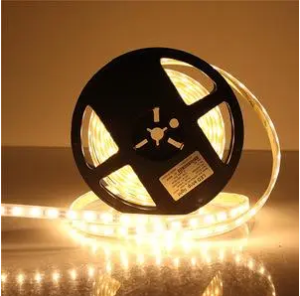Maximizing Energy Savings with Advanced Technology
Energy efficiency is a major consideration when selecting an LED power supply. The efficiency of a power supply determines how much electrical energy is effectively converted into light, as opposed to being wasted as heat. A high-quality LED power supply boasts efficiency ratings that can significantly impact both energy consumption and operational costs.
Understanding Efficiency Ratings
Efficiency ratings, typically expressed as a percentage, indicate how well a power supply converts AC (alternating current) into usable DC (direct current) power for LEDs. For instance, a modern LED power supply might operate with an efficiency of 85% to 95%. This means that 85-95% of the electrical energy is used for lighting, while only 5-15% is lost as heat. In contrast, older or lower quality power supplies may operate at efficiencies as low as 70%, resulting in higher energy costs and increased heat output.
The Impact of High Efficiency
Using an efficient LED power supply is crucial for reducing electricity usage, especially in large-scale or continuous lighting applications. For example, in a commercial setting where lights operate for 10 to 12 hours a day, switching from a power supply with 70% efficiency to one with 90% efficiency can lead to significant cost savings. Over the course of a year, the difference in energy consumption could easily translate into hundreds or even thousands of dollars saved, depending on the scale of the installation.
Heat Management and Longevity
In addition to cost savings, more efficient power supplies generate less heat, which has a direct impact on the longevity and reliability of both the power supply and the LED modules it serves. Excessive heat can degrade electronic components over time, leading to more frequent failures and replacements. Efficient power management thus not only saves money on energy bills but also on maintenance and replacement costs.

Environmental Benefits
Choosing an energy-efficient LED power supply also aligns with broader environmental goals. Reduced energy consumption means lower greenhouse gas emissions, especially in regions where electricity is generated from fossil fuels. By investing in high-efficiency power supplies, businesses and individuals can contribute to a reduction in their carbon footprint, promoting a more sustainable approach to lighting.
Choose a Trusted led power supply
For those committed to energy efficiency, selecting a LED power supply known for its high efficiency is crucial. It’s not just about meeting current needs—it’s about anticipating the future impacts of your energy usage.
Key Takeaway: Efficiency Equals Excellence
An efficient LED power supply does more than just save money; it enhances the performance and sustainability of your lighting system. With the right power supply, you can reduce operational costs, extend the lifespan of your lighting components, and contribute to environmental sustainability. Make sure to choose a power supply that not only fits your immediate needs but also upholds your commitment to efficiency and responsibility.